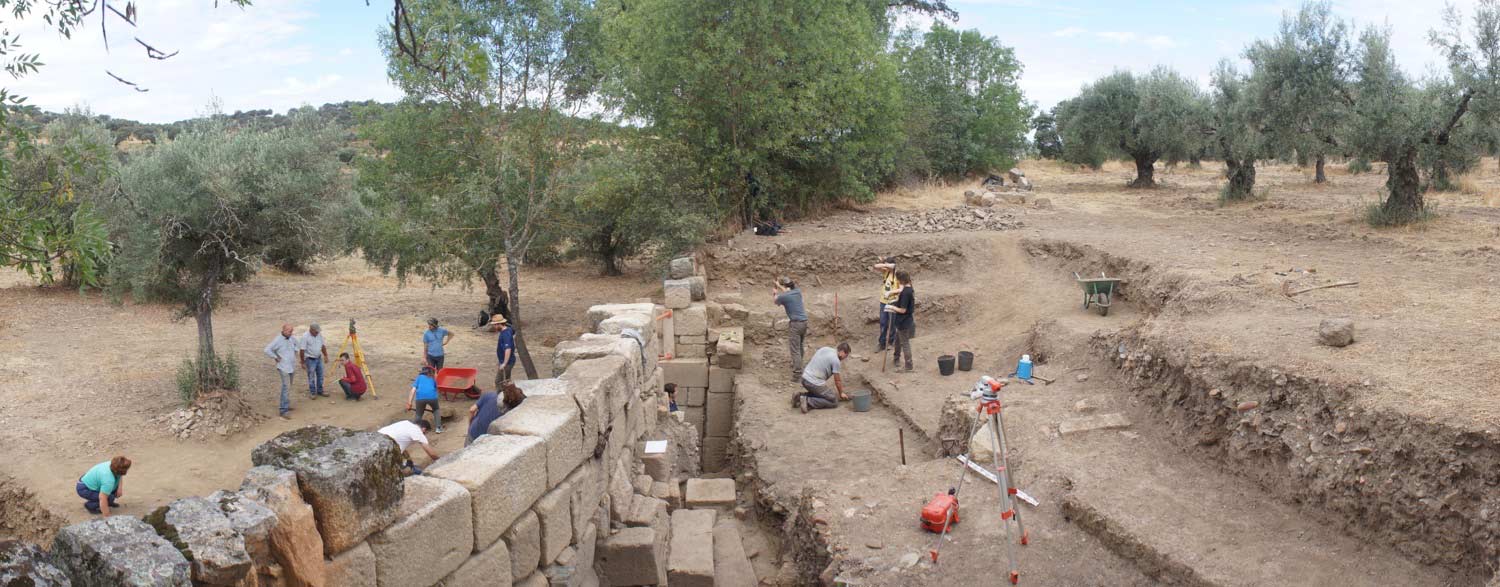
Archaeological excavations as part of the IGAEDIS project have taken place in recent weeks, continuing the field research started in 2017. The work has led to the discovery of the ancient southern gate of the Roman city of Igaedis, which time has transformed into the village of Idanha-a-Velha. This year’s discoveries made it possible to ascertain the chronology of several periods of construction as well as to reconstruct the wall surrounding the late Roman and medieval Roman city. It was recognised that the wall when erected cut off part of previous structures and was built with worked stone sourced from several Roman public buildings that were then being dismantled. The now uncovered southern gate experience a long life and was subject to several restructurings that included its fitting out and transformation into a medieval keep.
The IGAEDIS – Da Civitas Igaeditanorum à Egitânia (IGAEDIS – From Civitas Igaeditanorum to Egitania) project is a joint initiative between IEM | NOVA FCSH, FL | University of Coimbra and the Municipality of Idanha-a-Nova. This collaboration results from a protocol signed by these three entities in 2016, which was this month joined by the Centro Regional Directorate of Culture, whose Director, Doctor Susana Menezes, signed an addendum to the original protocol in conjunction with the aforementioned entities. These partnerships aim to capitalise on the research being carried out, transforming it into explanatory narratives that enhance and safeguard the history and heritage of this ancient Roman capital and high medieval episcopal cathedral, which is already classified as a National Monument.